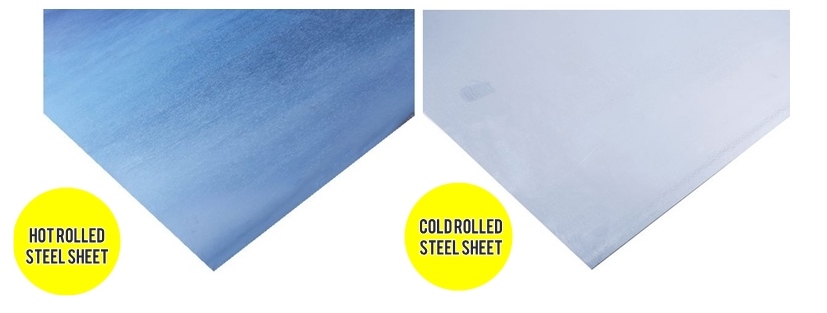One regular question we’re asked is what’s the difference between hot rolled and cold rolled steel? Many people think that the difference between the two lies in the product grade or specification, but that’s not the case. The truth is, the difference is in how they are processed at the manufacturing stage.
What is hot rolled steel and how is it made?

During steel mill manufacturing, there is a process known as hot-rolling. This involves hot rolling the steel with additional heat at temperatures above 1700oF. Because this temperature is above the metal’s recrystallization temperature, the steel can be formed and shaped more readily and in a wider size range.
Hot-rolled steel is often cheaper than cold-rolled steel because the processing time is shorter.
However, because of the extended cooling time needed after the high-heat processing, hot rolled steel can be prone to shrinkage, so hot-rolling to exact dimensions is not possible.
Key characteristics to help identify hot rolled steel include:
- Scaling to the surface – this happens when the steel cools down from the extreme processing temperature.
- Rounded edges and corners on bar and plate products – because of the shrinkage, edges are less precisely finished.
- Distortions – again, due to cooling down from extreme temperatures, perfectly square angles may distort into more trapezium-shaped angles, and straight edges may not be precise.
What is cold rolled steel & how is it made?

Cold-rolled steel starts off by being processed in exactly the same way as hot-rolled steel.
But once it has cooled to room temperature, the steel is then re-rolled at room temperature. The term cold rolled should strictly only apply when the steel has been further compressed in this way.
Steel manufactured by the cold rolled method can be much more precisely produced for dimensional tolerance and straightness. It also offers a range of more varied and attractive surface finishes.
Key characteristics to help identify cold rolled steel include:
- Smoother surfaces, which may feel a little oily.
- Straight and true dimensions, with well-defined edges and true corner angles.
- Uniform straightness on tube products.
What are the popular uses for each kind of metal sheet?
Popular hot rolled products include:
- Steel bars, as typically used in construction and welding. Bars of this type are often used to make railroad tracks and beams.
- Agricultural equipment and structures.
- Automotive frames.
Popular uses for cold rolled steel include:
- Cold finished steel bars, strips and rods with higher tensile strength.
- Home appliances.
- Roof and wall support systems.
- Metal furniture and fixtures.
- Aerospace structures.
Hot rolled vs cold rolled steel
As a result of the different processing methods, there are times when one of these types of steel is more suitable than the other, depending on how it’s going to be used. When deciding between the two, it’s useful to consider:
- Large-scale structural components – for large-scale use, hot rolled steel offers a less expensive option, particularly if overall precision isn’t necessary.
- Surface finish – if the quality or variety of the surface finish is essential, then cold rolled steel offers more options for aesthetically pleasing finishes. However, hot rolled steel can be further finished through scaling and, if painting the surface is required, descaled hot rolled steel offers a much better surface for this.
- Size and shrinkage – when hot rolled steel cools it tends to shrink. This means it’s difficult to precisely control the final size and shape of the finished item. For precision measurements, cold rolled steel has the edge.
- Extensive additional treatments – cold rolled steel can be more unpredictable when further processing such as cutting, grinding or welding is needed. Due to internal stress from undergoing an additional process already, further treatments could lead to warping.
If you’d like to know more about the steel and steel products available from Buy Metal Online, just contact Sara, Jess, Rosey or Erin on sales@buymetalonline.co.uk – we’ll be happy to help.

